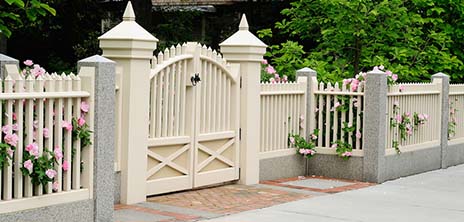Fence functions.

The reason for making fences is most often the need to limit or prevent admission to a given ter. Fences are therefore a necessary evil and their functions are very often treated exaggerated. Facilities requiring this type of security are: kindergarten, school, Botanical and zoological gardens, swimming pools etc.. Green areas objects generally do not fence except for some parts of them, np. economic or production. Entering and going out and fenced areas takes place through gates and wickets.
Each fence, Regardless of the basic function, it can be:
- an observation prepense,
- an anti -shield,
- a sound -absorbing barrier,
- decorative element.
Connecting these functions is the task of the designer. The most complex functions are fences of plots in single -family housing estates, where they give a sense of security, peace and coziness.
Regulations regarding the construction of fences
Construction applause determines the basic conditions of fences:
– The fence should be made in the road or street adjustment line,
– Fencing corners may not limit the visibility necessary for the safety of passers -by and vehicle traffic,
– fences should not cover the basic object,
– The form of the fence should harmonize with other elements of the environment and be aesthetic,
– Gates and wickets should open inwards,
– The spacing between the bars should not be greater than 15 cm, in nurseries and kindergartens no greater than 10 cm,
– The barbed wire cannot be suspended below 200 cm above the area,
– The external fence design requires a permit,
– Internal fences up to height 200 cm does not require permission.